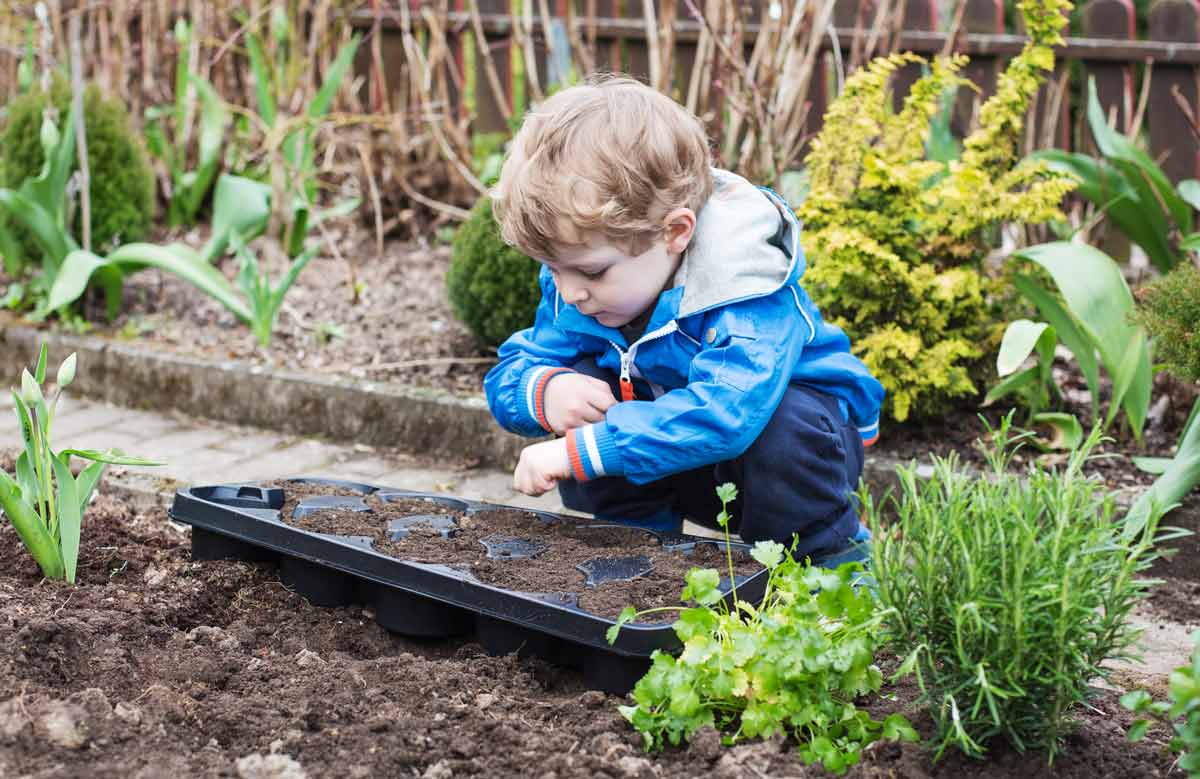Plant Journal
In this lesson, children will observe and document plant growth over time, while using descriptive language to examine changes in plant characteristics.
Content Area:
Growth and Change
Learning Goals:
This lesson will help toddlers and preschoolers meet the following educational standards:
- Understand that living things grow and change
- Understand that living things rely on the environment and/or others to live and grow
Learning Targets:
After this lesson, toddlers and preschoolers should be more proficient at:
- Observing, investigating, describing and categorizing living things
- Showing an awareness of changes that occur in the environment
- Describing and comparing the basic needs of living things
- Showing respect for living things

Plant Journal
Lesson plan for toddlers/preschoolers
Step 1: Gather materials.
- Seeds/seedlings
- Pots
- Planting Soil
- Watering Can
- Journals (notebook or stapled paper booklet)
- Pencils
- Camera (optional)
Note: Small parts pose a choking hazard and are not appropriate for children age five or under. Be sure to choose lesson materials that meet safety requirements.
Step 2: Introduce activity.
- In a large group, explain that everyone will be planting seeds in the classroom. Explain that we will keep track of the seeds/plants by observing them on a daily and/or weekly basis.
- Discuss why it is important to observe plants and care for them daily.
- Invite children to share what they already know about plants, how they grow and how to take care of them.
- Explain that the children will have their own journals to record their observations when they notice changes in their plants.
Step 3: Engage children in lesson activities.
- Separate the children into small groups and ask them to select a seed that they would like to grow.
- Ask the children to document the seed’s initial state in their journal as they draw the seed. Guide the children’s observations by describing seed characteristics.
- After this initial documentation, invite children to water their seeds daily.
- Once the seeds have sprouted, separate the children into small groups and invite them to observe and document their seed’s growth and change. This can take place on a daily or weekly basis, depending on the plant’s rate of noticeable growth.
- If possible, have the children photograph their plants at different stages, so that they document their observations with photos, as well as drawings.
- When the plants have grown, separate the children into small groups and invite them to share and discuss the similarities and differences between their plants and their journals.
Step 4: Vocabulary.
- Observe: To watch and document an item to gather information
- Document: To write down observations that can be used to identify changes or similarities over time
- Growth: How a living thing develops over time
Step 5: Adapt lesson for toddlers or preschoolers.
Adapt Lesson for Toddlers
Toddlers may:
- Not yet have fine motor skills to draw accurate representations of plants or seeds
- Use simple sentences to describe their observations
Child care providers may:
- Add more photographs to children’s journals to visually see the changes that occur
- Write down children’s dictations instead of drawings
Adapt Lesson for Preschoolers
Preschoolers may:
- Be interested in comparing aspects of height, width and leaf count
- Make connections between outdoor plants or plants in their homes
- Notice similarities and differences between plant types
Child care providers may:
- Provide measuring tools or support mathematical language in describing plant characteristics
- Use children’s background knowledge of plants to make comparisons to plants in the classroom and the outdoor or home environment
- Arrange experiments with room location, amounts of water and/or type of soil for children to draw conclusions about plant needs
Suggested Books
- Planting a Rainbow by Lois Ehlert
- Because of an Acorn by Lola and Adam Schaefer
- The Tiny Seed by Eric Carle
- The Carrot Seed by Ruth Krauss
Music and Movement
- Parts of a Plant, sung to the tune of “The Wheels on the Bus”
- The Farmer Plants the Seed
Outdoor Connections
- Explore what plants grow in the neighborhood
- Visit a plant nursery or community garden
Comment on this lesson